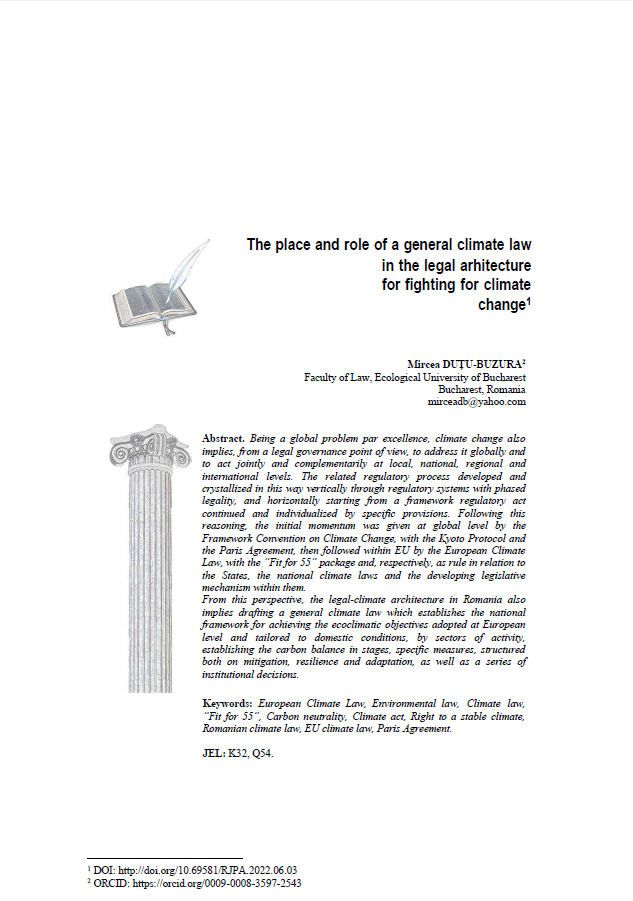The Place and Role of A General Climate Law in the Legal Arhitecture for Fighting for Climate Change
DOI:
https://doi.org/10.69581/RJPA.2022.06.03Keywords:
European Climate Law, Environmental law, Climate law, “Fit for 55”, Carbon neutrality, Climate act, Right to a stable climate, Romanian climate law, EU climate law, Paris AgreementAbstract
Being a global problem par excellence, climate change also implies, from a legal governance point of view, to address it globally and to act jointly and complementarily at local, national, regional and international levels. The related regulatory process developed and crystallized in this way vertically through regulatory systems with phased legality, and horizontally starting from a framework regulatory act continued and individualized by specific provisions. Following this reasoning, the initial momentum was given at global level by the Framework Convention on Climate Change, with the Kyoto Protocol and the Paris Agreement, then followed within EU by the European Climate Law, with the “Fit for 55” package and, respectively, as rule in relation to the States, the national climate laws and the developing legislative mechanism within them.
From this perspective, the legal-climate architecture in Romania also implies drafting a general climate law which establishes the national framework for achieving the ecoclimatic objectives adopted at European level and tailored to domestic conditions, by sectors of activity, establishing the carbon balance in stages, specific measures, structured both on mitigation, resilience and adaptation, as well as a series of institutional decisions.

Downloads
Published
Issue
Section
License

This work is licensed under a Creative Commons Attribution-NonCommercial-NoDerivatives 4.0 International License.


